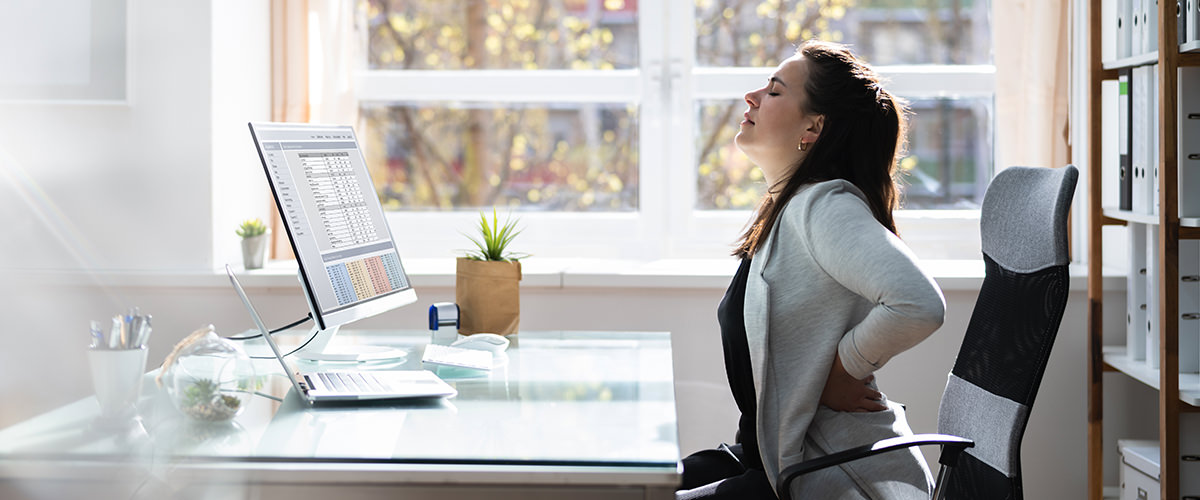Osteopathic treatment for lower back pain
Does your back hurt? Do you have a blocked sensation in this part of your body, with limited range of movement? You’re probably suffering from lower back pain. Also known as lumbago, this local pain can be soothed naturally with osteopathy.
What is Lumbago?
Lower back pain is severe pain in the lumbar vertebrae at the base of the back. Common (around 80% of the population will suffer from lower back pain at least once in their lives), it can extend from the buttocks through the back of the thighs to the knees. It is mainly caused by damage to the muscles, tendons or ligaments that support the spine.
Generally speaking, lower back pain causes a sharp pain in the lower back, as well as a feeling of blocking and difficulty in carrying out movements with ease.
There are a number of different types of lower back pain:
- The most common form of lower back pain is functional. It is most often caused by an osteoarticular or visceral mechanical dysfunction in the lumbar region or abdomen.
- Symptomatic lower back pain, which occurs in less than 5% of cases. It is linked to an older trauma such as a fracture or a condition (infection, tumour). Osteopaths are unable to treat it, but they can refer the patient to a competent doctor.
- Lower back pain with radicular compression (around 12.5% of cases) is mainly caused by a herniated disc pressing on the nerve in the spinal cord. This is commonly referred to as sciatica and cruralgia. In most cases, an osteopath can treat this pain.
Lower back pain can last a few days (acute), a few months (chronic) or even several years (recurrent).
Factors involved in the onset of lower back pain
Lower back pain can occur spontaneously or as a result of a sudden, traumatic movement.
Certain factors increase the risk of contracting lower back pain.
- A sedentary lifestyle and lack of sporting activity: muscles tend to slacken. They no longer effectively support the spine, which leads to pain.
- Physical constraints associated with a professional activity: poor posture, vibrations in the body, etc.
- Intense physical activity: the body is overworked and can no longer keep its own structures in balance. This mainly affects top-level athletes.
- Stress, anxiety and fatigue can be triggers for lower back pain, particularly chronic lower back pain.
- Being overweight or obese.
- Age increases the risk of developing lower back pain. That’s why it’s a good idea to have an osteopathic check-up every year.
- Pregnancy is a frequent cause of acute lower back pain.

Osteopathy, a therapy that relieves and prevents back pain
Soothe a sore back with an osteopath
An osteopathy session always takes place in 4 stages, enabling the practitioner to get to know the patient, identify the painful areas, adapt the treatment and provide advice.
When assessing the patient’s medical history, the practitioner interviews the patient to find out why they have come to the clinic: medical history, lifestyle, emotional trauma. Ideally, patients should bring their medical reports and images with them, so that the therapist has a clear picture of their case.
Then, during the test phase, the therapist will locate the area under stress. This is when the therapist will be able to assess whether or not the patient needs to be referred to a doctor (symptomatic lower back pain). If they are able to do something about the pain, they will adapt their treatment to cure it.
First of all, the therapist works directly on the lumbar vertebrae to release tension. This can be done close to the painful area or at a distance. In addition, osteopathy is a holistic therapy that takes into account:
- structures linked to back pain, such as the digestive system or old sprains;
- the entire spinal column;
- the body as a whole, in order to eliminate any other problems that may or may not be related to lower back pain.
Osteopathic prevention
Osteopathy is effective not only in relieving suffering from lower back pain, but also in preventing recurrences. In fact, it is recommended that you see your osteopath once or twice a year to check all the structures in your body and keep them in alignment. In particular, they will check that your lumbar region is supple.
They can also give you some advice on how to protect your back.
- Adapt your workspace and become aware of your posture.
- Regular physical activity appropriate to your health and age.
- Eat a balanced diet and keep well hydrated to avoid digestive problems (an aggravating factor).
- Reduce the amount of heavy lifting you do.
- Etc.
Our backs are under constant stress and are often badly treated. To avoid increasing the risk of lower back pain, it’s important to take care of this part of our body by doing small, simple actions on a daily basis. When the pain is urgent, osteopathy is ideal for treating lower back pain.
Its holistic approach makes it possible to treat the underlying causes and act preventively to minimise any recurrence.
Is your back stiff and you’re unable to move at home or at work?Our osteopaths provide emergency treatment 7 days a week throughout the island of Montreal!